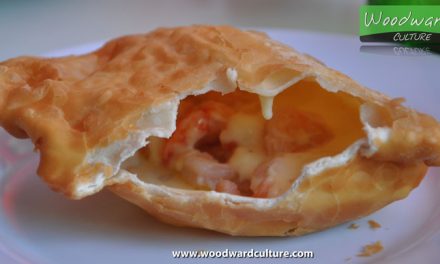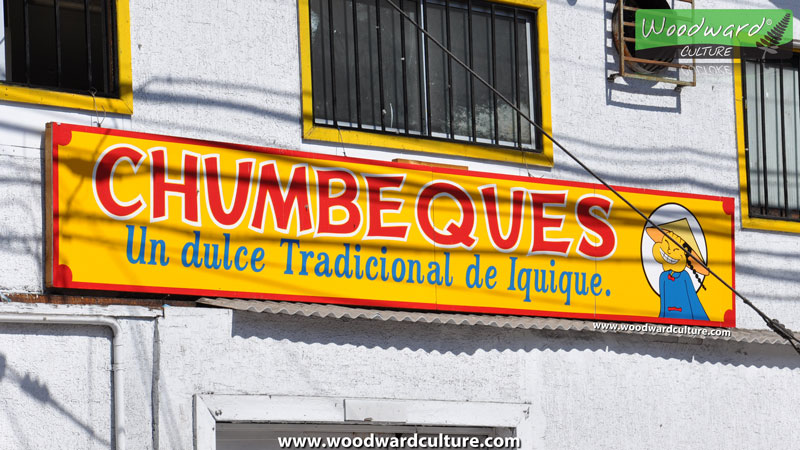
Chumbeques – A Traditional sweet from Iquique
Someone from our office knew that I was going to Iquique for work and immediately asked me to bring some Chumbeques back.
“What the hell are they?” I thought.
Sounded like some small furry animal that you keep as a pet … and then eat.
Well, I wasn’t too far off. You do eat them but they aren’t pets.
After a little investigating, I discovered that it was a traditional sweet of Iquique which has been around since 1920 and it is as much a part of the city as the beach is.
So when I got a bit of free time, I set off on a long journey to discover the shop where they first starting making chumbeques over a century ago.
Ok, it was only a couple of blocks away from where I was staying downtown, but that doesn’t sound as adventurous.
But what is a chumbeque?
Chumbeque is a sweet that has three layers of a type of biscuit originally filled with Limón de Pica (a type of small lemon from Pica) spread and some other secret ingredients.
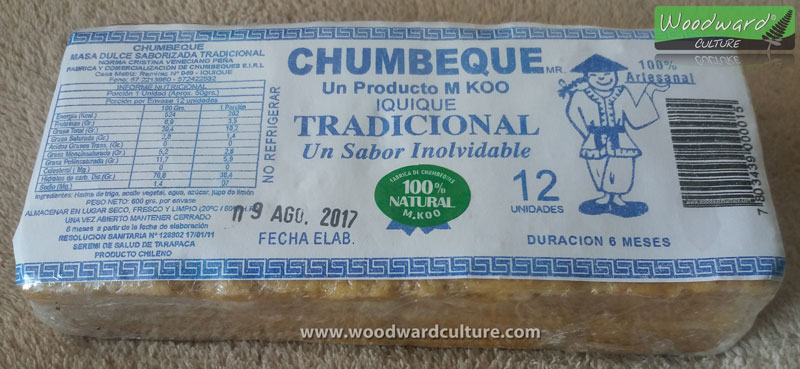
So what’s the story behind chumbeques?
Amongst the first wave of Chinese immigrants that came to Iquique due to the Salitre (Saltpeter = Sodium Nitrate) boom at the beginning of the 20th Century was Mr Koupolin Koo Kau, a doctor of natural Chinese medicine that attended people in the small mining towns.
However after the end of the First World War (1918), the Saltpeter (Salitre) industry declined dramatically (because it contains the minerals or whatever to blow up stuff – when a war finishes, there isn’t much stuff you are allowed to blow up), so a great migration of people went to look for work in the center of Chile (that’s where the capital is).
Mr Koo stayed in Iquique though he had to find alternative options to make a living. In his search he arrived at Pica y Matilla where he fell in love with Petronila Bustillos Sandoval, a well known sweet maker in the zone. (It must be true that the way to a man’s heart is through his stomach – with food that is, not sharp objects)
After observing the way she made the classic Alfajores of Pica y Mantilla, he remembered a fellow countryman (Chung) that produced sweets made from beans and incorporated what he remembered from that process into a new sweet.
What to call this new sweet?
Mr Koo, with his precarious Spanish referred to it has “Chung-Queque” (el queque de Chung). Eventually the locals “spanishified” the word calling it chumbeque.
And that is how chumbeque, the traditional sweet of Iquique was born.
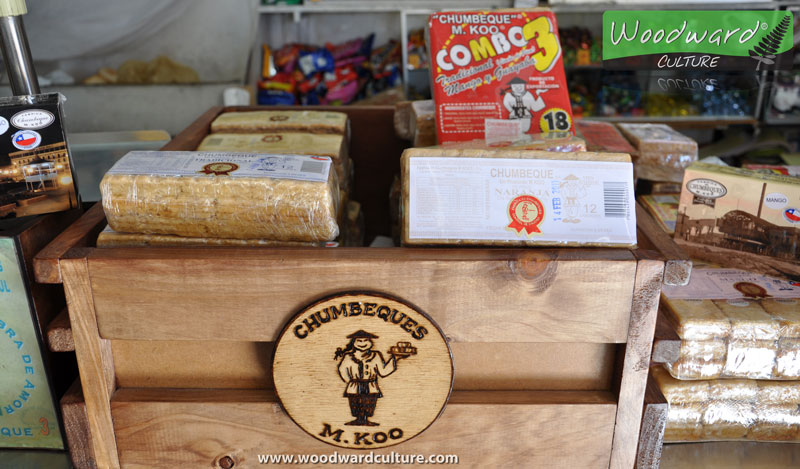
Random Facts about Chumbeques?
What makes it different from other sweets is that the chumbeque can last for months and still maintain its freshness and flavour. So stock up on them in case of major earthquake or for end-of-the-world/zombie attack scenarios.
The chumbeque is highly nutritious and contains 450 calories per unit, making it ideal for active people (looking at you sportspeople and hyperactive students) though if you are worried about putting on weight, there is also a Chumbeque “Light” version containing less calories.
There have been offers by big companies to become partners and sell chumbeques nationwide but the stumbling point has always been the reluctance to change the name (M-Koo) and the saying “The traditional sweet of Iquique”.
Where can you buy Chumbeques?
You can still buy them at the original shop / factory where they were first made over a century ago:
Ramirez 795, downtown Iquique
(that’s the store in the photo below)
If you are not in Iquique, you may find it in some supermarkets in the 2nd Region and a few rare places in Santiago. (Good luck with that!)
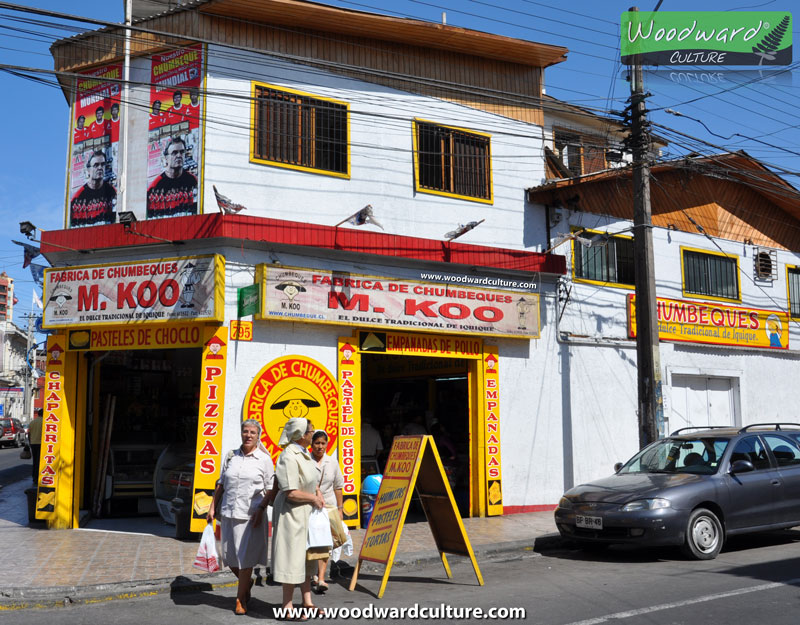
Chumbeque Flavors
The first new flavour (outside of the traditional one) was created in 1993 after a suggestion made by a client which involved Mango honey (how yummy does that sound… a big YUM!). It went down well with other clients so more flavours were gradually added.
Currently you can find the following chumbeque flavors:
- Limón de Pica (Pica Lemon) also known as the Traditional Chumbeque.
- Mango
- Naranja (Orange)
- Guayaba (Guava)
- Papaya
- Maracuyá (Passionfruit)
- Manjar (typical brown Chilean spread made from boiled milk and sugar)
You can see in my photo below that each chumbeque flavor has its own distinct colored wrapping … 👇
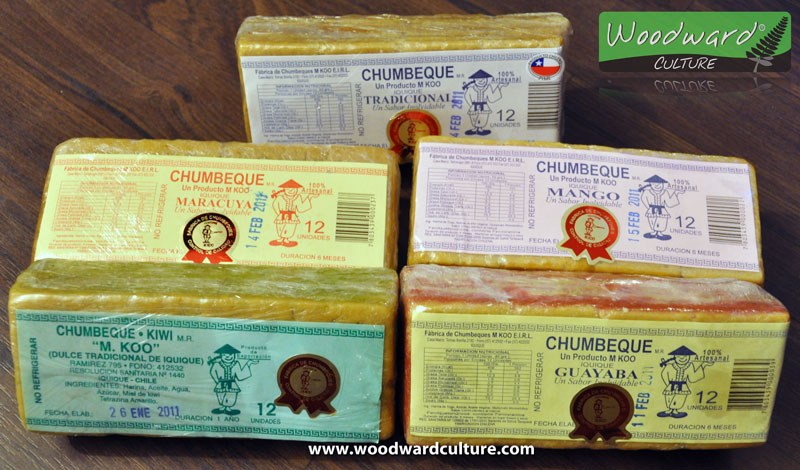
Have you ever tried a chumbeque?



